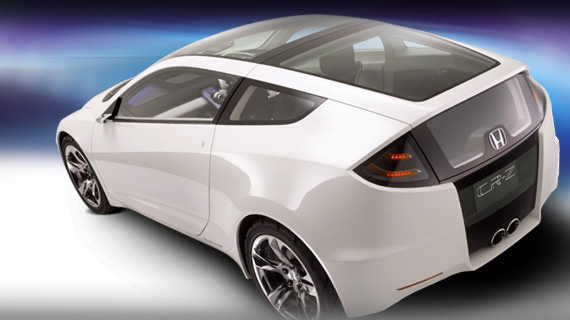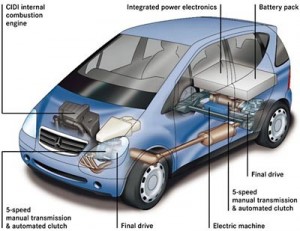
Hybrids Come of Age
Just 10 years ago Honda released the Insight as the first US mass market hybrid combustion/electric car. Its two seat aerodynamic teardrop shape, light weight and focused engineering delivered spectacular fuel economy that generated quite a bit of media attention. In the real world however, the Insight represented significant compromises in terms of utility, performance and perceived safety. Launched at the height of the SUV boom alongside inexpensive gasoline, sales weren’t significant and to many people the Insight was another Honda engineering experiment; a car that Honda’s Asimo robot might drive, but not something American families would put in their garage.
What a difference a decade makes. Last week the EPA released its annual Fuel Economy Guide for 2010 and hybrids swept the podium with 9 out of the top 10 MPG scores. At least in terms of EPA ratings, hybrids are the drivetrain technology of the moment. Perhaps more important than MPG is how the technology has evolved into a variety of solutions that can be used across a range of body styles without many of the original Insight’s compromises.
Thus, many car shoppers are now faced with yet another question to consider — ‘Should I get the hybrid?’ It looms large amongst the usual shopping factors of size, price, performance and features. The information below should help demystify at least part of the hybrid question. We provide general information about the technology and list the hybrids currently available with direct links to manufacturer information. Once you read beyond the technical details there are harder questions that deserve consideration. Finally, no guide to hybrids is complete without attempting to identify some ‘best’ choices and then posing the more important question of whether hybrids are in fact good choices at all.
| COMPACT | MIDSIZE | LUXURY MIDSIZE | LUXURY FULLSIZE | SPORT UTILITY |
Technology First
When setting out to buy a car, recognize that the hybrid powertrain option is just one choice among many and it shouldn’t be perceived as magical or a starting point. In simple terms it is a technology that helps reduce fuel consumption and exhaust emissions. That said, the technology is not simple, nor is it cheap. Knowing a bit about the different types of hybrid technologies may help explain the cost/value difference of one particular hybrid over its combustion counterpart or competitor.

Currently the two major types of hybrid solutions are referred to as mild and full. True electric vehicles (EVs) are beyond the scope of this article, but deserve mention because they are a natural evolution of hybrid technologies. There are a couple of true EVs on the market today such as the Hollywood darling Tesla and many refer to the next generation of ‘plug-in’ hybrids as EVs, but the lithium ion battery technology underneath them isn’t quite ready for the mass market. That will change very soon, but buyers should feel comfortable knowing that today’s hybrids are based on mature, cost effective, nickel-metal hydride battery packs.
Mild hybrids are combustion/electric motor combinations with a relatively small electric motor/battery pack which provides assistance to a gasoline engine in a way that helps the combustion motor be as fuel efficient as possible and still provide acceptable performance. Currently Honda and GM are the major purveyors of this solution and its major advantage over full hybrids is relative simplicity and cost. Mild hybrids may not provide the spectacular fuel economy numbers of full hybrids, but with careful engineering they can come close with much more manageable manufacturing costs. They also tend to offer more flexibility in packaging which allows mild solutions to be easily fitted to a broader range of vehicles. Finally, the weight of a mild hybrid tends to be less than a full hybrid because of the smaller battery packs. Lower weight improves drivability and makes the experience more transparent.
Full hybrids have a larger electric motor/battery back combination which enables them to run solely on battery power at urban stop-and-go speeds. They only engage the combustion motor when more performance is needed or the batteries need recharging. Full hybrids are more complex than their mild counterparts and there are a variety of interpretations of what ‘full’ means; from the classic Toyota blend in the Prius, to the combustion motor as ‘range extender’ working in series with the electric motor that we will see in the upcoming Chevrolet Volt. Regardless of the subtype, full hybrids still combine combustion and electric motors with more emphasis on the electric side of the equation to maximize efficiency. The upside is typically class leading mileage with the downside being complexity, weight and cost.
| COMPACT | MIDSIZE | LUXURY MIDSIZE | LUXURY FULLSIZE | SPORT UTILITY |


Leave a Reply